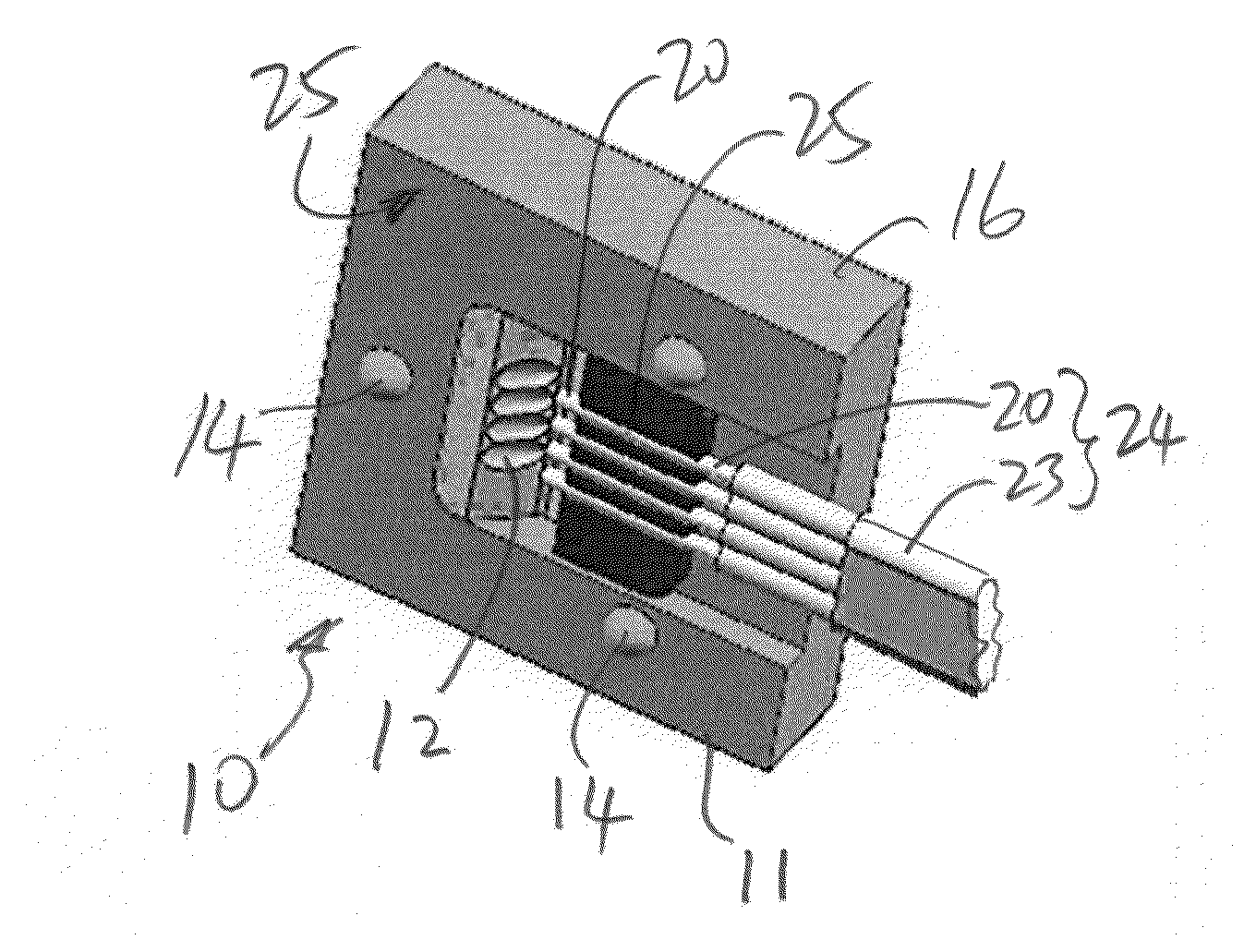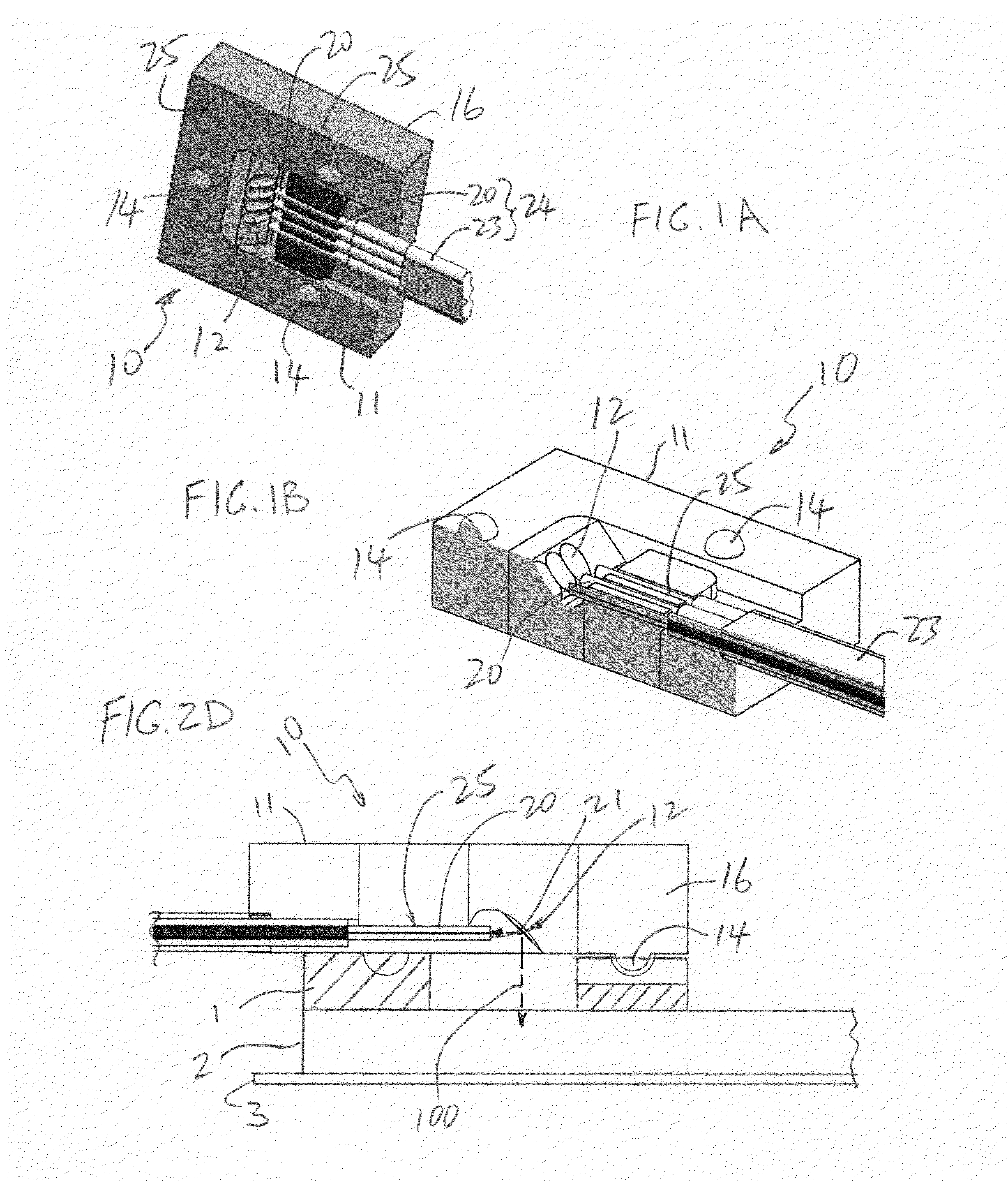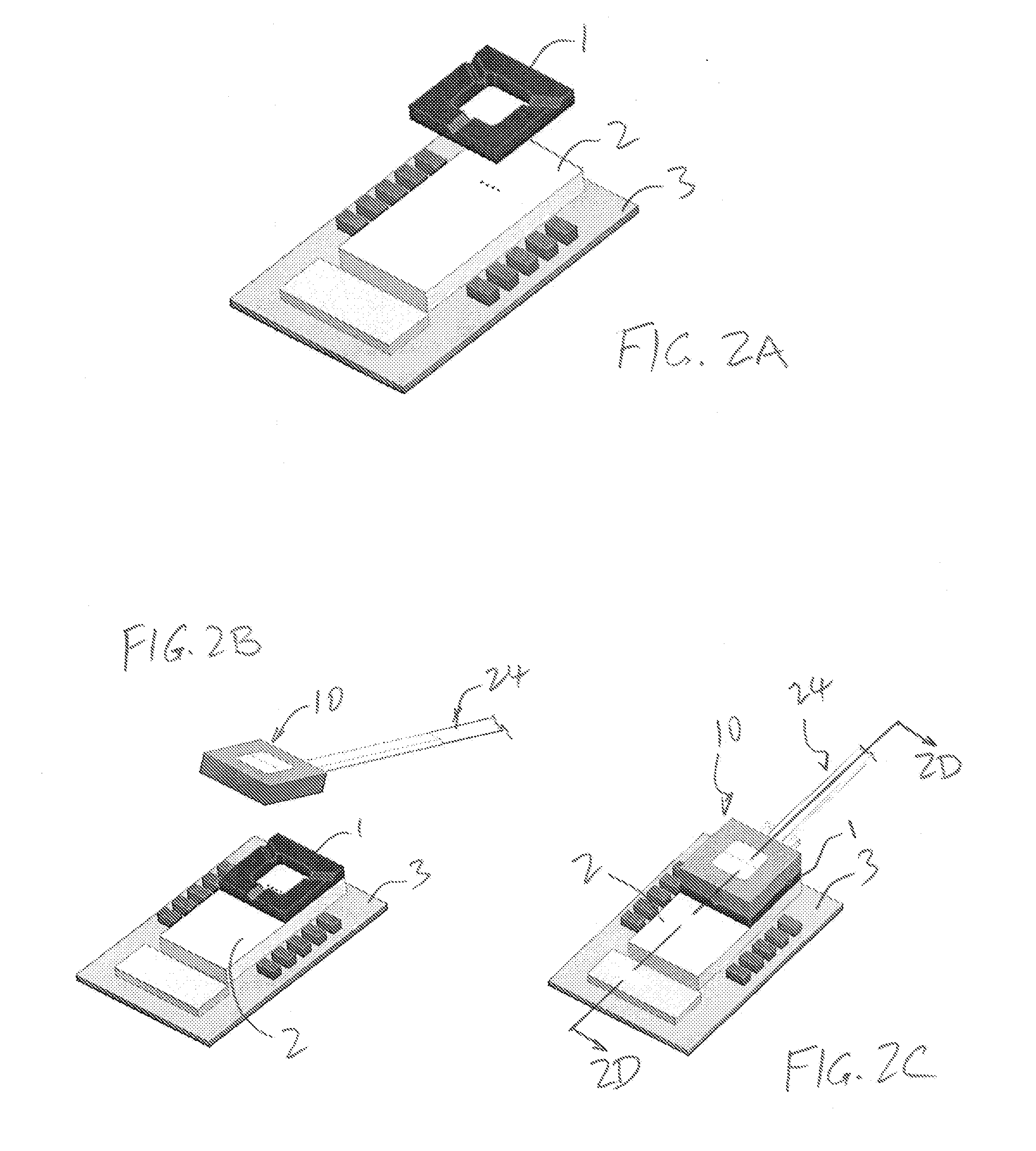Demountable optical connector for optoelectronic devices
a technology of optoelectronic devices and optical connectors, which is applied in the direction of optical elements, instruments, manufacturing tools, etc., can solve the problems of fiber connection, time-consuming process, and one of the most expensive components of photonic networks, and achieve the effect of increasing the stiffness of the interface, reducing the dependence on the bending stiffness of the connector, and adding to the cos
- Summary
- Abstract
- Description
- Claims
- Application Information
AI Technical Summary
Benefits of technology
Problems solved by technology
Method used
Image
Examples
Embodiment Construction
[0019]This invention is described below in reference to various embodiments with reference to the figures. While this invention is described in terms of the best mode for achieving this invention's objectives, it will be appreciated by those skilled in the art that variations may be accomplished in view of these teachings without deviating from the spirit or scope of the invention.
[0020]The present invention provides a novel approach to coupling light between an optical bench (e.g., supporting an optical fiber) and an opto-electronic device (e.g., grating coupler of a photonic integrated circuits (PIC)). The novel connection includes a foundation and a connector that is configured and structured to be removably attachable for reconnection to the foundation in alignment therewith.
[0021]The concept of the present invention will be discussed with reference to an example of a PIC as an opto-electronic device, and an optical bench as an optical coupling device (connector) for use to opti...
PUM
| Property | Measurement | Unit |
|---|---|---|
| optical path | aaaaa | aaaaa |
| connection structure | aaaaa | aaaaa |
| elastic | aaaaa | aaaaa |
Abstract
Description
Claims
Application Information
 Login to View More
Login to View More - R&D
- Intellectual Property
- Life Sciences
- Materials
- Tech Scout
- Unparalleled Data Quality
- Higher Quality Content
- 60% Fewer Hallucinations
Browse by: Latest US Patents, China's latest patents, Technical Efficacy Thesaurus, Application Domain, Technology Topic, Popular Technical Reports.
© 2025 PatSnap. All rights reserved.Legal|Privacy policy|Modern Slavery Act Transparency Statement|Sitemap|About US| Contact US: help@patsnap.com



